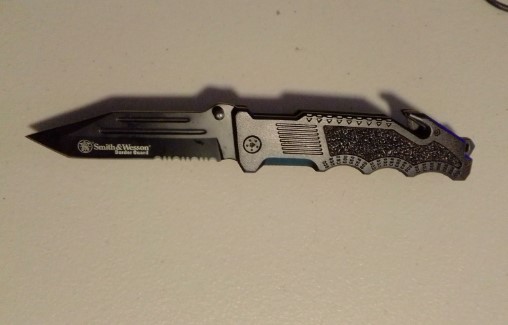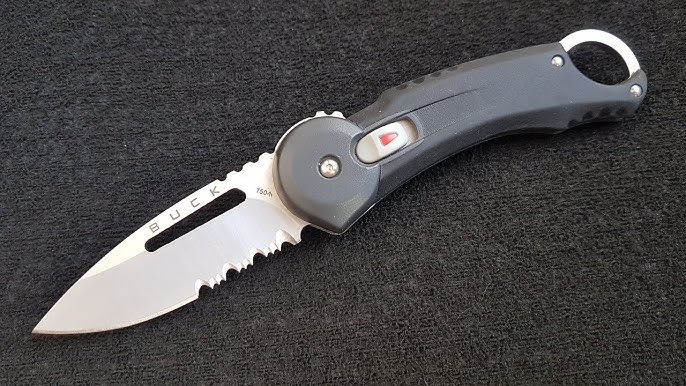How to Clean a Pocket Knife | Pocket Knife Maintenance
Table of Contents
Why Keeping Pocket Knife Cleaning Important?
Regardless of size or purpose, a pocket knife requires proper cleaning and maintenance. Regular cleaning and maintenance contribute to the longevity of your pocket knife. By removing dirt, debris, and moisture, you prevent the accumulation of rust and corrosion, which can degrade the knife’s structural integrity over time.
A clean pocket knife performs better. Removing dirt and grime from the blade ensures smooth and efficient cutting while maintaining a sharp edge enhances its cutting precision.
Cleaning your pocket knife is not only about preserving its performance but also about your safety and hygiene. A clean knife reduces the risk of slips, accidents, and contamination when using it for various tasks or preparing food during outdoor activities.
How to Clean Pocket Knife at Home
Cleaning pocket knife with dish detergent
Before we dive into the cleaning process, gather the following supplies:
- A Soft Cloth or Microfiber Cloth
- Mild Soap or Dish Detergent
- Warm Water
Here’s a simple guide to cleaning your pocket knife at home.
If your knife is designed for easy disassembly, carefully remove it, separating the blade from the handle. Refer to the manufacturer’s instructions if needed.
Using the soft cloth, gently wipe away any visible debris or dirt from the blade, handle, and pivot area.
Pay close attention to crevices and hard-to-reach areas.
Mix mild soap or dish detergent with warm water to create a soapy solution.
Dip the cloth into the solution and clean the blade, ensuring you cover the entire surface. Be cautious around the sharp edge.
Similarly, use the soapy solution to clean the handle, removing accumulated dirt or grime. Pay attention to textured areas or intricate designs.
Thoroughly dry the blade and handle using a clean, dry cloth. Ensure there is no moisture left to prevent rust or corrosion. Once dry, apply a small amount of lubricant or oil to the pivot area for smooth operation.
If you disassembled your knife, carefully reassembled it, ensuring all components fit snugly together.
How to Clean Pocket Knives During Outdoor Adventures
You may not always be able to clean your pocket knife at home. You can use different techniques to clean a dirty pocket knife during outdoor expeditions.
Cleaning pocket knife with Water and Soap
During outdoor expeditions, you can clean your pocket knife with minimal supplies.
Find a clean and safe spot with access to water for cleaning your knife.
Scrub the blade and handle using water and soap to remove dirt, debris, and any accumulated residue. Pay attention to the pivot area and hard-to-reach spots.
After cleaning, dry the blade and handle completely using a clean cloth or allow them to air dry. Ensuring no moisture is left on the knife is crucial to prevent rust formation. Once dry, apply a small amount of lubricant or oil to the pivot area for smooth blade movement and to protect against corrosion.
Cleaning Pocket knife with Boiling Water
When you are without soap or cleaning supplies during outdoor adventures, boiling water can be a helpful alternative.
- Find a heat-resistant container suitable for boiling water. Exercise caution while handling boiling water to avoid burns. Ensure a stable surface for the container.
- Place the disassembled knife components, excluding non-metallic or heat-sensitive parts like handles made of certain materials or synthetic scales, into the container of boiling water.
- Allow them to boil for a few minutes. The boiling water will help loosen dirt and grime from the knife.
- Remove the knife components from the boiling water and carefully dry them using a clean cloth or allow them to air dry. Once dry, apply lubricant or oil to the pivot area to smooth operation and prevent corrosion.
Cleaning Pocket knife with Field Cleaning Kit
Consider assembling a portable cleaning kit to be prepared for cleaning your pocket knife while enjoying outdoor activities.
Portable Cleaning Kit Essentials
- Small Container Or Bag To Hold The Cleaning Supplies
- A Soft Cloth Or Microfiber Cloth
- Mild Soap Or Specialized Knife-cleaning Solution
- Brush With Soft Bristles (Toothbrush Or Dedicated Knife Cleaning Brush)
- Lubricant Or Oil (Preferably In A Small Dropper Bottle)
- Ziplock Bags (For Keeping The Knife Components During Cleaning)
Cleaning Process in the Field
When you need to clean your pocket knife on the go, here is a process.
- Disassemble The Knife, Keeping The Components In Separate Ziplock Bags If Possible.
- Use A Soft Cloth And Brush To Remove Dirt, Debris, And Grime From The Blade, Handle, And Pivot Area.
- Create A Soapy Solution Using Mild Soap Or Specialized Knife Cleaning Solution And Water, And Clean The Components
- Thoroughly.
- Rinse The Components With Water Or Clean Them With A Damp Cloth.
- Dry The Components Completely Using A Cloth Or Allowing Them To Air Dry.
- Apply A Small Amount Of Lubricant Or Oil To The Pivot Area To Ensure Smooth Operation And Corrosion Protection.
How to Clean a Rusty Pocket Knife with Vinegar and Lemon Juice
Cleaning a rusty pocket knife requires more effort and attention to detail. Rust affects the knife’s appearance and can compromise its performance.
Wear protective gloves to protect your hands from sharp edges or potential exposure to rust particles. Safety goggles are also recommended to protect your eyes during the cleaning process.
Cleaning Essentials
- Soft Cloth Or Sponge
- White Vinegar Or Lemon Juice
- Baking Soda Or A Rust-removing Product
- A Toothbrush Or Soft-bristled Brush
- Water
- Lubricant Or Oil
- Steel Wool (Optional For Tougher Rust)
Wipe away any loose rust particles from the blade and handle using a soft cloth or sponge. Be gentle to avoid scratching the knife’s surface.
- For light to moderate rust, soak the affected parts of the knife in white vinegar or lemon juice for about 15-30 minutes. These acidic solutions help dissolve and loosen the rust.
- Create a paste by mixing baking soda with water or use a rust-removing product according to its instructions.
- Apply the paste or rust remover to the rusted areas of the knife and gently scrub with a toothbrush or soft-bristled brush.
- Work the paste into the rusted spots, focusing on the most affected areas.
- For more stubborn rust, you can use fine-grade steel wool. Remember to be cautious and gentle to avoid damaging the knife’s surface.
- Use the steel wool to carefully scrub the rusted areas, always moving toward the blade’s edge.
- Thoroughly rinse the knife components with water to remove any residue from the cleaning process.
- Dry them thoroughly using a soft cloth to prevent new rust from forming. Ensure no moisture is left on the knife.
- Once the knife is dry, apply a small amount of lubricant or oil to the pivot area and any moving parts.
- It will protect against future rust and ensure smooth operation. Carefully reassemble the pocket knife, making sure all components fit securely together.
How to Maintain Tip Your Pocket Knife?
Regularly inspect your pocket knife for any signs of wear, damage, or loose components. Check the blade’s sharpness and ensure the locking mechanism functions properly. Address any issues promptly.
Maintaining a sharp blade is crucial for optimal performance. Learn proper sharpening techniques or seek professional sharpening services when needed. Always follow safety precautions when sharpening a knife.
Store your pocket knife in a clean, dry place, away from moisture and extreme temperatures when not in use. Consider using a protective sheath or pouch to prevent accidental damage or injury.
Regularly clean and dry your pocket knife after use to prevent corrosion, especially if exposed to moisture. Applying a thin layer of lubricant or oil to the blade and pivot area helps create a barrier against moisture and oxidation.
Final Words
Regularly cleaning and maintaining your pocket knife is crucial for its longevity, performance, and safety. Perform routine inspections, sharpen the blade when necessary, and store it in a dry place with proper protection. A clean and well-maintained pocket knife ensures reliability, enhances safety, and promotes hygiene, making it an indispensable tool for everyday tasks and adventures.
Frequently Asked Questions (FAQs)
- How to Clean the Grooves or Texture of a Pocket Knife Handle?
Use a soft-bristled brush or toothbrush to gently scrub and clean the grooves or texture of a pocket knife handle. You can also use a mild soap or specialized knife-cleaning solution to remove dirt and debris. Rinse the handle thoroughly with water and dry it completely.
- Can I Clean the Belt Clip of a Pocket Knife?
You can clean the belt clip of a pocket knife with a soft cloth or sponge dampened with mild soap and water to wipe the belt clip. Gently scrub any stubborn dirt or residue. Rinse with water and dry the clip thoroughly before reattaching it to the knife.
- How Do You Properly Clean Hard-To-Reach Areas or Crevices of a Pocket Knife?
Use a soft-bristled brush, toothpick, or cotton swab to clean hard-to-reach areas or crevices of a pocket knife. You can also use compressed air or a can of air duster to blow away particles.







